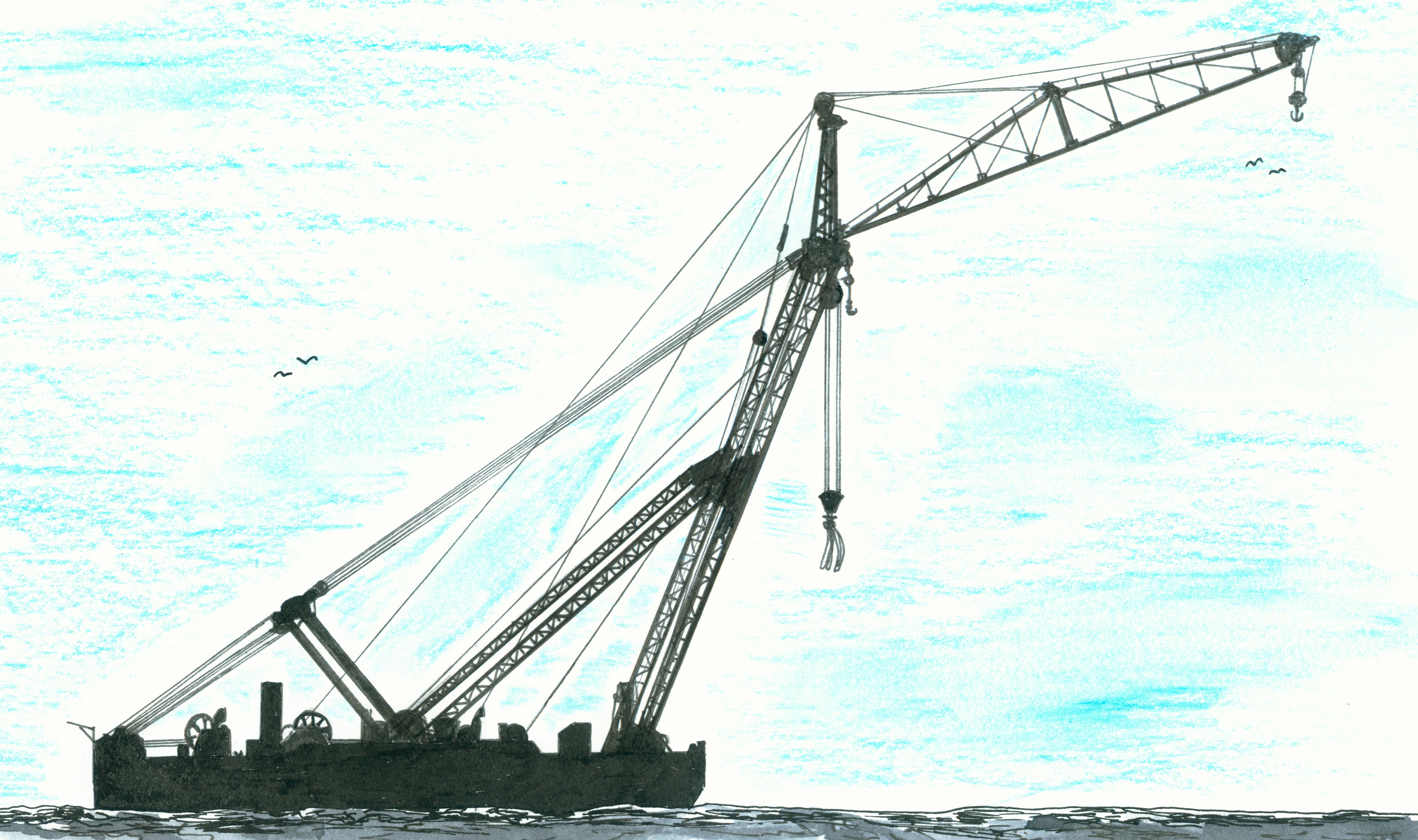The pontoon was built at the Ysselwerf firm Byker, Gorinchem where also the superstructure was assembled. The superstructure included winches and steam boiler was made at the Kon. Mij. De Schelde, Vlisisngen, Netherlands of which the Ysselwerf was a subsidiary. Yard number 239. Dimensions pontoon 35,02 (over upper deck) x 15,81 (maximum) x 3-3,5 metres (hold), gross register tonnage 464,17 tons/ 1.1314,92 cubic metres, net register tonnage 270,97 tons/767,61 cubic metres and a displacement of 1.163,45 tons. Total lifting capacity 250 tons. Originally built for salvaging of wrecks and lifting of bridges to restore the during th Second World War destroyed infrastructure of the Nethrrlands. Building ordered in January 1945 although probably in the end of 1944 the shipyard was asked to built a huge floating sheerleg. On 19 April 1945 started what was called the depreciable work, first transport with materials sent from Vlissingen towards Gorinchem on 8 December 1945. pontoon on stocks in March 1946, launched on 15 July 1947, tested by the Polymex (Polsike Towarsystwo Eksportowo Importowe Maszyn i Narzedi) of Warshaw, which wanted to buy her for 1.500.000 Dutch guilders, on 30 September 1948, of buying the crane for an sum of 1.500.000 Dutch guilders but finally not sold caused by an accident although she was allread baptized Bartosz, tested by a Russian commission between 28 October-4 November 1949 and docked on the slipway of the fa. Boele at Bolnes, Netherlands between 21-23 November 1949.
Preserved correspondence dealing with the sale to the Soviet Union revealed that already in May 1949 between the yard and Machino-Import at Moscow negotiations were going on. In several letters were the technical demands discussed. On 25 May was the Soviet trade representative invited to inspect the floating crane on Friday 3rd June. On 26 July the USSR offered for the crane complete with two Harbormaster-units fitted to the pontoon to pay 1.000.000 Dutch guilders. The crane was to be dismantled for the journey over sea included assembling in the USSR again. The board of the shipyard refused however this offer asking 200.000 guilders more and another 33.000 US dollars for the harbourmaster units. On 24 October was with the trade representative a test program discussed which should executed between 29 October and 3 November. Present for Machine Import were Hangaldian, Teleguine and Egorov. On 23 November visited the captains of the icebreaker Ilja Murometz and the tug Appolon the shipyard at Gorinchem to inspect the ‘Floating Shirleg no. 238’. However she was not ready for delivery or transport. Finally the Dutch towing company L. Smit&Co’s Internationale Sleepdienst was contracted to tow her from Rotterdam towards Leningrad or Libau to depart before or on Wednesday 14 December that year. After being degaussed at Rotterdam, Netherlands, the Dutch tug De Schelde indeed left the contracted day with the crane towards Kiel, Germany where she was to be replaced by the tug Ganges. At Kiel it became clear that the Ganges was not available and that De Schelde was to tow her further. On 31 December wrote the towing company that she was still off Helsinki. Leningrad advices in the meantime to go Tallinn regarded the worse weather conditions. In January 1951 was she towed from Helsinki to Tallinn, Estonia. Her further fate is yet unknown.

